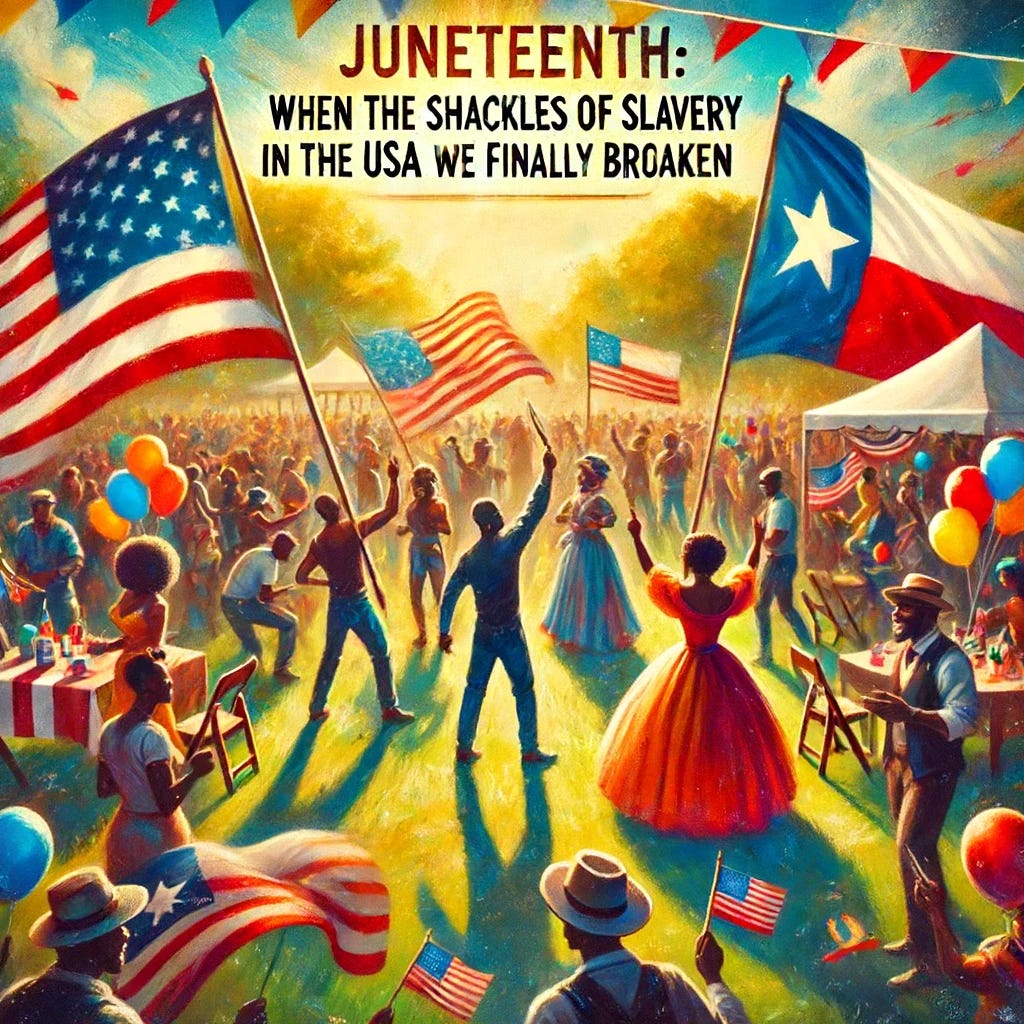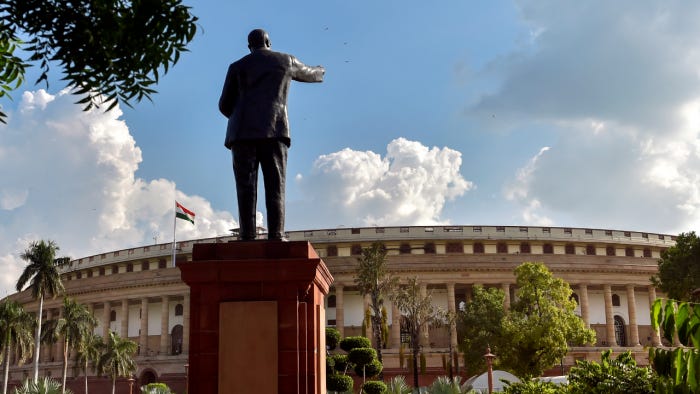Juneteenth: When the Shackles of Slavery in the USA Were Finally Broken
Marks the Final Eradication of Slavery's Vestiges in the USA Following the Civil War's End in 1865.
Significance and Origins
Juneteenth, also known as Freedom Day, Jubilee Day, or Emancipation Day, is a federal holiday in the United States that commemorates the final end of slavery. Celebrated annually on June 19th, it marks the day in 1865 when Union soldiers arrived in Galveston, Texas, and announced that all enslaved people were free, more than two years after the Emancipation Proclamation.
Historical Background
The Proclamation and Texas
On June 19, 1865, Union General Gordon Granger read General Order No. 3, proclaiming freedom for enslaved people in Texas. This marked the last significant bastion of slavery in the United States following the Civil War. Despite President Abraham Lincoln's Emancipation Proclamation, issued on January 1, 1863, which legally freed slaves in the Confederate states, enforcement in Texas had been slow and inconsistent until General Lee's surrender in April 1865.
Early Celebrations
The first Juneteenth celebrations began in 1866 and were marked by prayer meetings, speeches, educational events, family gatherings, and picnics. However, the early 20th century saw a decline in these celebrations due to economic and cultural shifts. It wasn't until the Civil Rights Movement of the 1960s that Juneteenth experienced a resurgence. On January 1, 1980, Texas interestingly became the first US state to designate Juneteenth as a state holiday. By 2021, it was recognized as a holiday in 48 states and the District of Columbia.
Becoming a Federal Holiday
Legislative Milestone
Juneteenth became a federal holiday on June 17, 2021, when President Joe Biden signed the Juneteenth National Independence Day Act into law. This landmark decision followed decades of activism and a renewed push for racial justice after the police killings of George Floyd, Breonna Taylor, and other Black Americans in 2020. The legislation passed with overwhelming bipartisan support in Congress.
Symbolic and Substantive Impact
Making Juneteenth a federal holiday is seen as a crucial step in acknowledging America's history of slavery and the ongoing fight for racial justice and equality. However, some argue that more substantive actions are needed to address systemic racism and its lasting impacts.
Celebrations and Traditions
Festivities and Foods
Juneteenth celebrations often feature festivals, parades, concerts, pageants, and family gatherings. Traditional foods, often red in color, such as red velvet cake, strawberry soda, and barbecued meats, are served. The color red is significant, symbolizing the bloodshed and resilience of the enslaved.
Cultural and Educational Activities
Public readings of the Emancipation Proclamation, singing traditional songs, and raising the Juneteenth flag are common activities. The Juneteenth flag, with its blue and red stripes and central white star, symbolizes Texas, the Lone Star State. Reflecting on progress made and challenges still faced in the fight for equality is a key aspect of the celebrations.
Growing Recognition
In recent years, more companies and organizations have started to officially recognize Juneteenth. States like Texas, New York, Virginia, and Washington have made it a paid holiday for state employees. An increasing number of private companies also provide a paid day off on Juneteenth.
The Juneteenth Flag: Symbols of Freedom and Hope
a.) Concept and Conception
As June 19 approaches, you might see a unique red, white, and blue flag flying over state capitols and city buildings, especially in Texas. This banner, with its distinctive bursting star in the middle, is the Juneteenth Flag, a powerful symbol representing the end of slavery in the United States.
b.) Creation and Evolution
The Juneteenth Flag was conceived by activist Ben Haith, founder of the National Juneteenth Celebration Foundation (NJCF), in 1997. Boston-based illustrator Lisa Jeanne Graf brought their vision to life, and the flag was revised to its current design in 2000. In 2007, the date "June 19, 1865," was added, marking the day Union General Gordon Granger announced the emancipation of enslaved African Americans in Galveston, Texas.
c.) Symbolism of the Star
The white star in the center of the flag holds dual significance. It represents Texas, the Lone Star State, where the last enslaved people were informed of their freedom. Additionally, it symbolizes the freedom of African Americans across all 50 states, extending beyond Texas.
d.) The Bursting Outline
The bursting outline around the star is inspired by a nova, which signifies a new star. This element represents a new beginning for African Americans, symbolizing their emancipation and the dawn of a new era of freedom.
e.) The Arc
The arc that stretches across the width of the flag symbolizes a new horizon. It signifies the opportunities and promises that lay ahead for Black Americans, reflecting hope and future progress.
f.) The Colors
The red, white, and blue colors of the Juneteenth Flag mirror those of the American flag. These colors serve as a reminder that formerly enslaved people and their descendants are an integral part of the nation. They also symbolize the continuous commitment of people in the United States to strive for equality and to uphold the American ideal of liberty and justice for all.
g.) In Summary
The Juneteenth Flag is a profound emblem of freedom, hope, and the ongoing fight for equality. Its symbols collectively represent the history, struggle, and enduring spirit of African Americans, as well as the nation's commitment to justice and liberty for all.
Global Recognition
International Celebrations
While Juneteenth originated in the United States, it has received growing international recognition. Celebrations have spread to countries with histories of slavery, including Mexico, Nigeria, France, and the United Kingdom.
Similar Commemorations
In Mexico, Día de los Negros (Day of the Blacks) commemorates enslaved people who escaped from Texas into Mexico. Emancipation Day celebrations are held on various dates in many Caribbean nations, such as Jamaica, Barbados, and Trinidad and Tobago, marking the abolition of slavery in the British Empire in the 1830s.
India's Historical and Legal Battle Against Slavery
a.) Historical Perspective
Slavery in India has a multifaceted history, intertwined with the subcontinent's social, economic, and political landscape. The early existence of slavery in India is a topic of debate, particularly concerning the terms 'dasa' and 'dasyu,' which have been interpreted in various ways over the centuries. Ancient texts like the Arthashastra, Manusmriti, and Mahabharata document slavery, which included prisoners of war, debtors, and those enslaved as punishment. Unlike in some other societies, slavery in ancient India was not strictly based on caste; even individuals from higher castes could become slaves. During the Maurya Empire, slavery was reportedly banned, as noted by Megasthenes, though the Edicts of Ashoka indicate some ongoing obligations towards slaves.
The Islamic domination of northern India from the 11th century institutionalized slavery further, with large-scale enslavement and export of Hindus. The Mughal era saw an increase in slave trading, especially involving war captives. Despite these practices, some historians argue that slavery in ancient India was less severe compared to the Atlantic slave trade, with slaves having certain rights, though this remains a matter of scholarly debate.
b.) Legal Abolition and Modern Enforcement
The Constitution of India, under Article 23, explicitly bans slavery and human trafficking. Article 23(1) prohibits trafficking in human beings, forced labor (begar), and similar forms of exploitation, making any contravention of this provision a punishable offense. Article 23(2) allows for compulsory service for public purposes, provided it does not discriminate based on religion, race, caste, or class. To enforce these constitutional guarantees, India enacted laws such as the Immoral Traffic (Prevention) Act of 1956 and the Bonded Labour System (Abolition) Act of 1976. The latter was a crucial legislative measure to eradicate bonded labor, a modern form of slavery where individuals were forced to work to repay debts. This Act abolished the bonded labor system, released all bonded laborers from their debts, and criminalized attempts to force individuals back into bonded labor. Despite these laws, enforcement remains a challenge, requiring continuous vigilance and effort to combat persistent exploitation practices.
c.) Commemorative Days in India
Unlike Juneteenth in the United States, India does not have a specific day dedicated to commemorating the abolition of slavery. However, several national holidays mark the country's broader struggle for freedom and justice. India celebrates its Independence Day on August 15 and Republic Day on January 26, reflecting the end of British colonial rule and the adoption of a constitution that guarantees fundamental rights and freedoms for all citizens. While India does not have a day analogous to Juneteenth, the nation's history and legal framework reflect a long-standing commitment to eradicating slavery and forced labor. The constitutional protections under Article 23 and related laws like the Bonded Labour System (Abolition) Act signify India's dedication to human rights and the ongoing fight against exploitation. Through these commemorations and legal safeguards, India continues to honour its commitment to freedom, equality, and justice for all its citizens.
Forever Onward
Juneteenth marks a pivotal turning point in U.S. history, symbolizing the end of slavery while highlighting the ongoing struggle for true freedom, equality, and justice. What began as a regional celebration in Texas has grown into a global commemoration and call to action. The official recognition of Juneteenth as a federal holiday in 2021 was an important symbolic step, but much work remains to address the lasting impacts of slavery and systemic racism in the United States and worldwide. The Juneteenth Flag, with its profound symbols of a bursting star, new horizon, and patriotic colors, underscores this journey towards equality. Similarly, India's historical battle against bonded labor and modern legislative efforts reflect a shared global commitment to eradicating exploitation and achieving justice. Both nations must continue to strive towards these ideals, ensuring liberty and justice for all.
If you believe this article would interest someone you know, please feel free to share it anonymously (for us), using any platform that you prefer.







